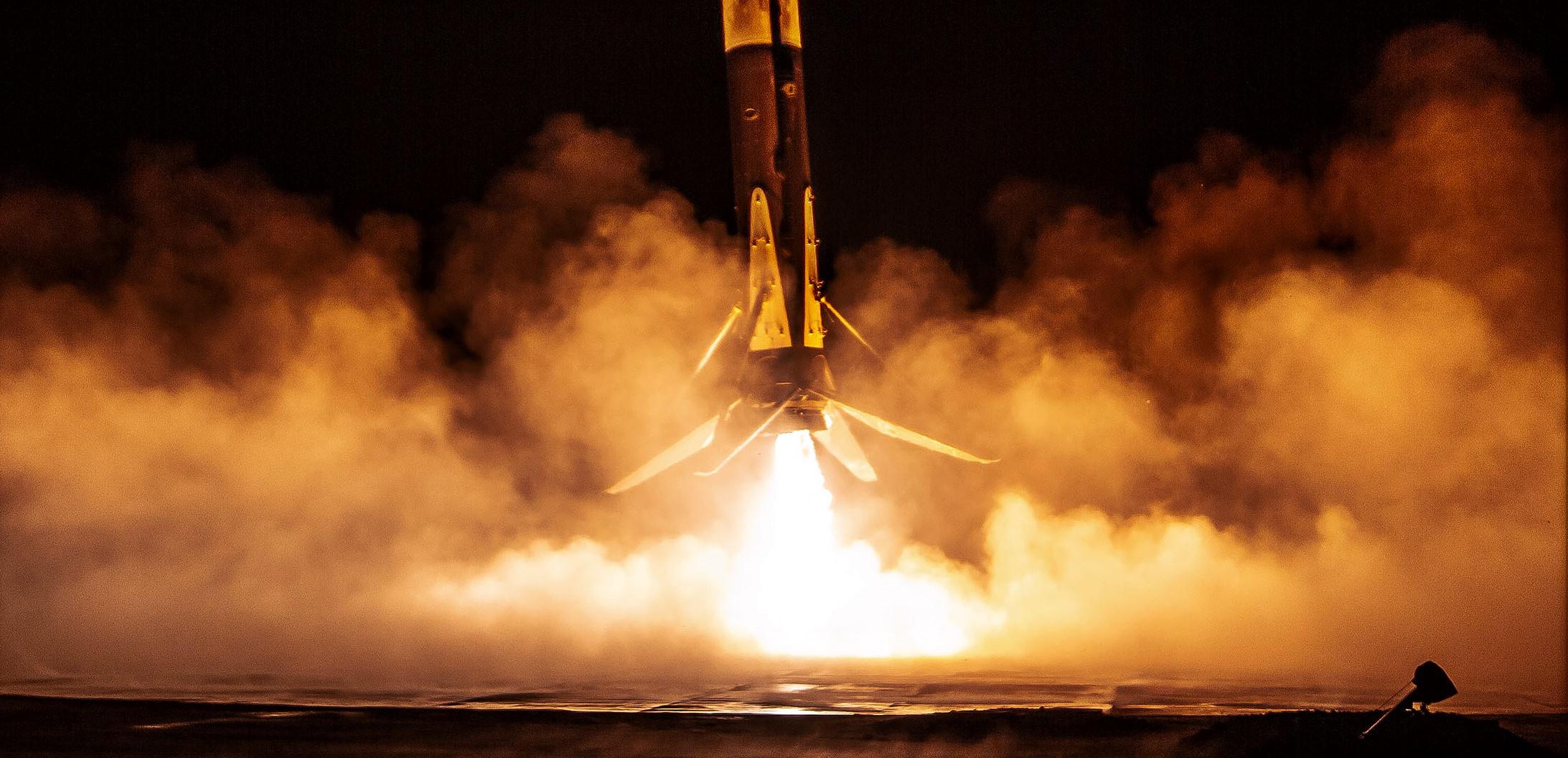

News
SpaceX just expanded the envelope of rocket recovery with 50th booster landing
CEO Elon Musk says SpaceX has successfully expanded the envelope of orbital-class rocket recovery with its 50th booster landing, meaning that all Falcon boosters will have a better chance of safely returning to Earth from now on.
On March 6th, after a four-day delay, a flight-proven SpaceX Falcon 9 rocket, new second stage, and twice-flown Cargo Dragon spacecraft successfully lifted off on the company’s 20th NASA Commercial Resupply Services mission (CRS-20). Dragon capsule C112 and its expendable trunk section are heading up Earth’s orbital hill to rendezvous with the International Space Station (ISS) tomorrow morning, nominally delivering some two metric tons (~4500 lb) of cargo to the ISS and its crew of astronauts. Once the spacecraft returns to Earth, SpaceX’s Dragon 1 program will effectively be over, wrapping up almost a decade of launches with some 45 metric tons (100,000 lb) of cargo delivered to the ISS.
Back on the ground, SpaceX’s Falcon rocket family still has a long life ahead of it and is likely to support one or several hundred more launches between now and its retirement. Additionally, Elon Musk says that the specific Falcon 9 rocket that launched CRS-20 has now proven that SpaceX rocket boosters can successfully land back on Earth even when ground winds are exceptionally high, hopefully guaranteeing many more booster recoveries to come.
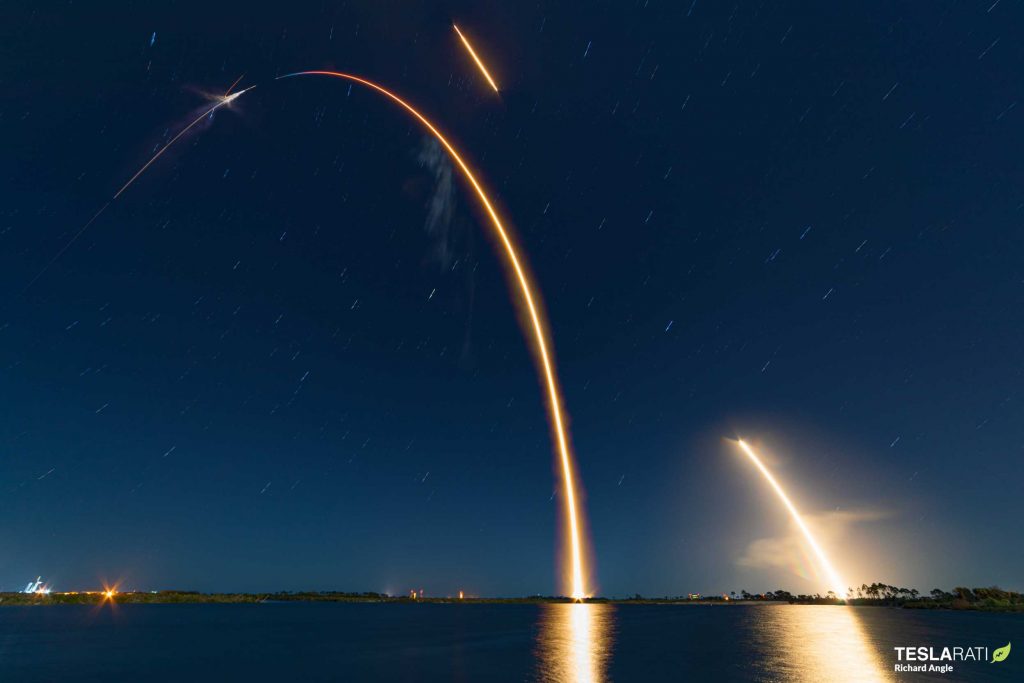
Teslarati photographer Richard Angle was on site to capture the spectacular launch and landing. The exceptionally detailed long-exposure image above includes the entirety of Falcon 9 B1059’s launch and landing, from main engine cut-off (MECO) and boostback burn to the booster’s reentry and landing burns.
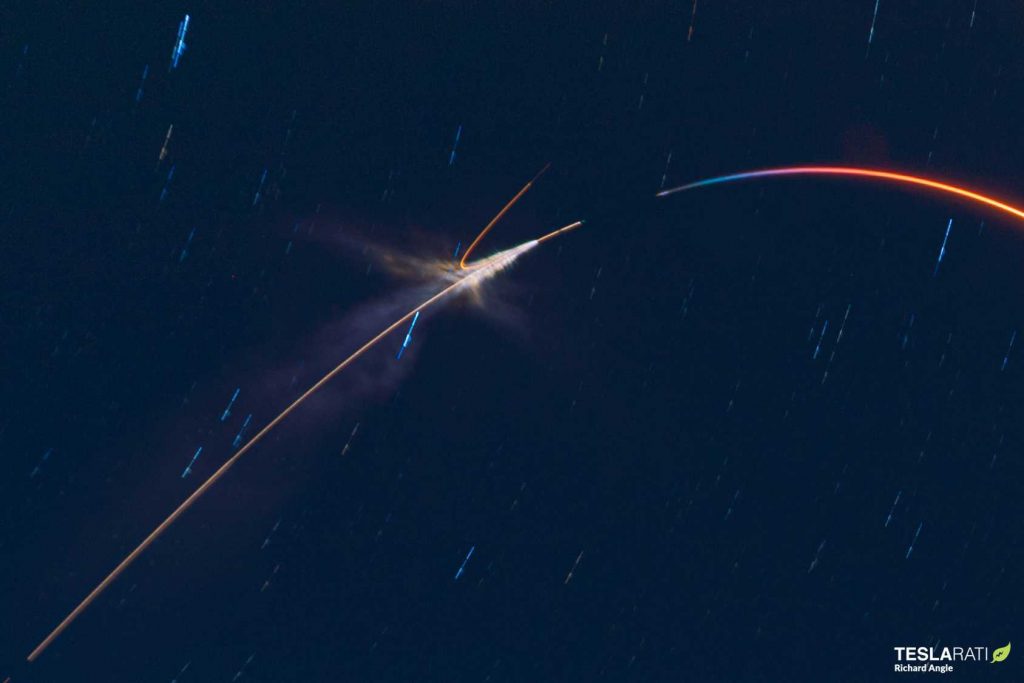
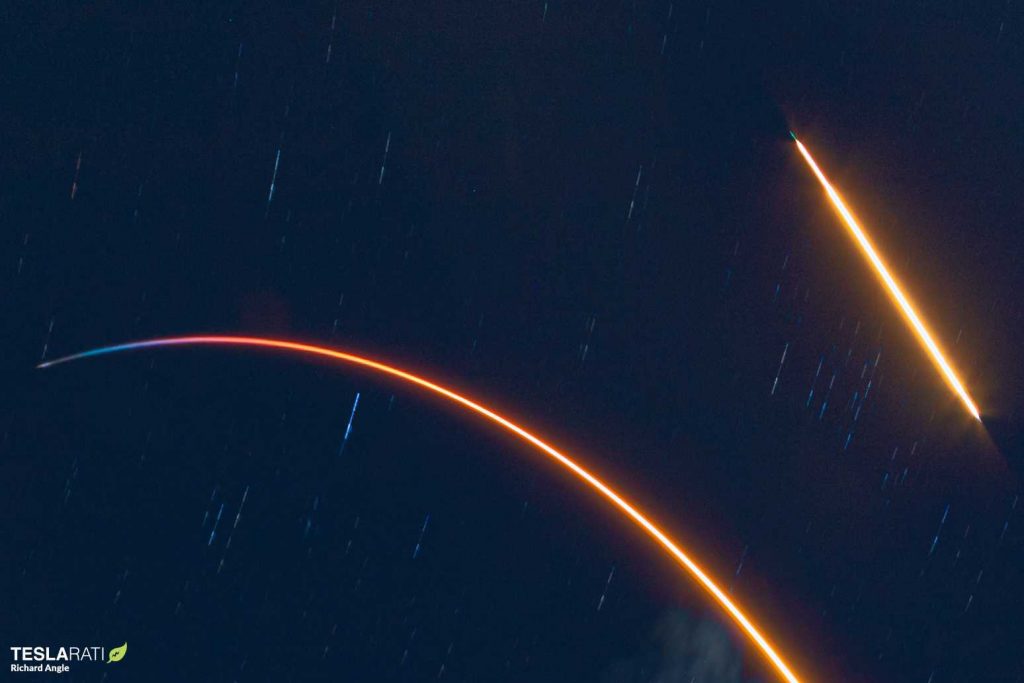
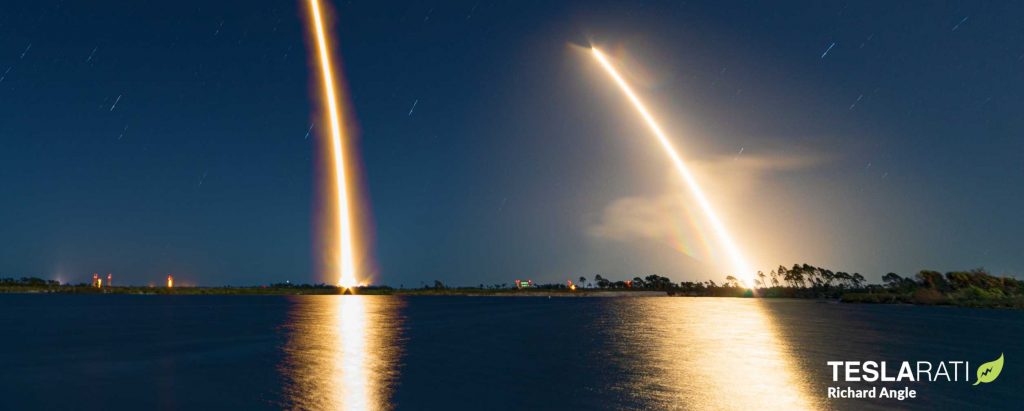
According to Musk, this particular landing was unique because it proved Falcon boosters can be successfully recovered – with a bulls-eye landing, no less – even when winds are high around the landing zone (or drone ship). SpaceX intentionally took this risk in part to expand Falcon 9’s safe envelope of operations, which now includes both winds during liftoffs and winds during landings.

While Cargo Dragon 1 may be on its way to the ISS for the last time, SpaceX won a second ‘Phase 2’ CRS contract from NASA that will see the company begin cargo launches to the space station with its Dragon 2 spacecraft – a lightly modified Crew Dragon – as early as Q4 2020, give or take a month. Prior to that mission, known as CRS-21, Crew Dragon is expected to launch at least once and possibly twice, first carrying two NASA astronauts to the ISS on its Demo-2 test flight and SpaceX’s inaugural crewed launch. There’s also a limited chance that SpaceX will flawlessly complete Demo-2 and be able to prepare a second Crew Dragon for its first operational astronaut launch (deemed ‘Crew-1’) before the end of 2020.
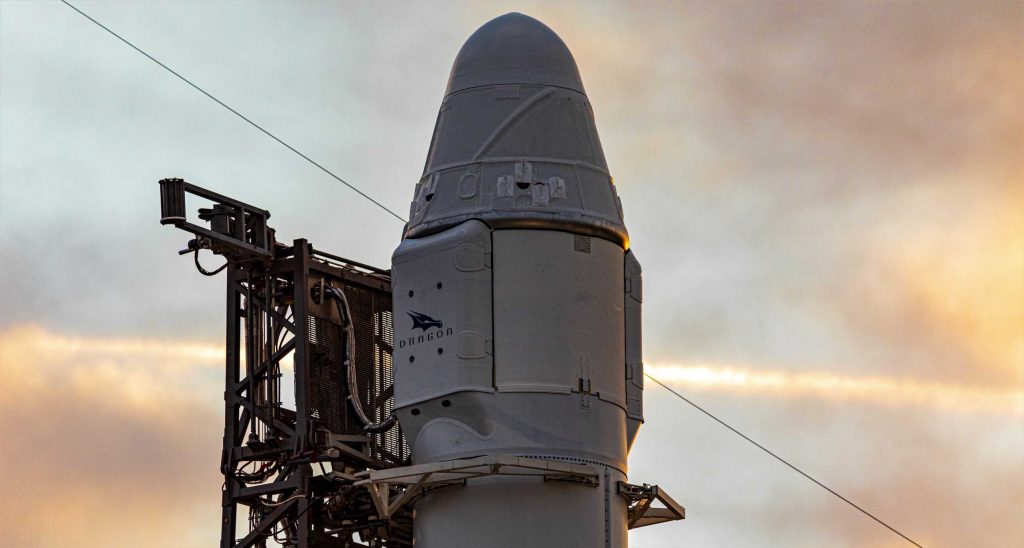
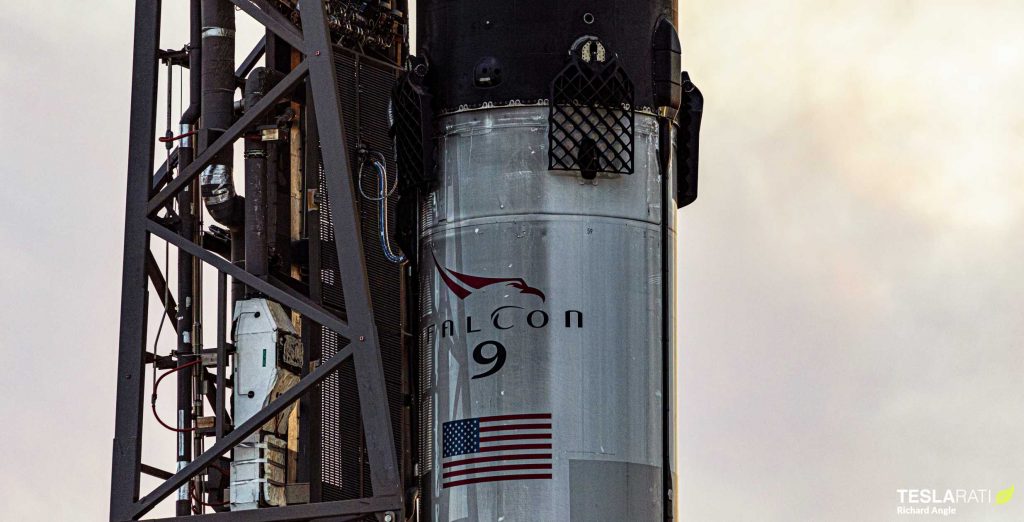
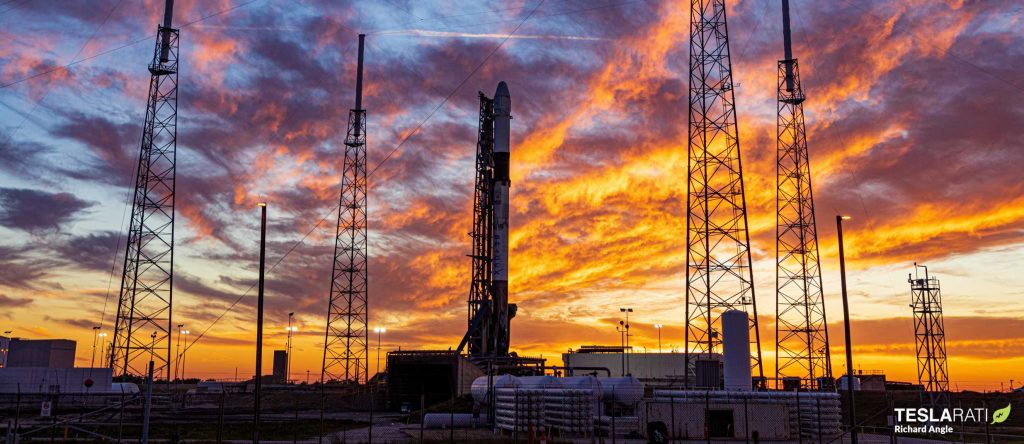
For now, SpaceX’s next Dragon launch will also be the company’s first astronaut launch ever. Crew Dragon’s Demo-2 mission is scheduled to lift off no earlier than late-April or May 2020.
Check out Teslarati’s Marketplace! We offer Tesla accessories, including for the Tesla Cybertruck and Tesla Model 3.

News
Tesla starts showing how FSD will change lives in Europe
Local officials tested the system on narrow country roads and were impressed by FSD’s smooth, human-like driving, with some calling the service a game-changer for everyday life in areas that are far from urban centers.

Tesla has launched Europe’s first public shuttle service using Full Self-Driving (Supervised) in the rural Eifelkreis Bitburg-Prüm region of Germany, demonstrating how the technology can restore independence and mobility for people who struggle with limited transport options.
Local officials tested the system on narrow country roads and were impressed by FSD’s smooth, human-like driving, with some calling the service a game-changer for everyday life in areas that are far from urban centers.
Officials see real impact on rural residents
Arzfeld Mayor Johannes Kuhl and District Administrator Andreas Kruppert personally tested the Tesla shuttle service. This allowed them to see just how well FSD navigated winding lanes and rural roads confidently. Kruppert said, “Autonomous driving sounds like science fiction to many, but we simply see here that it works totally well in rural regions too.” Kuhl, for his part, also noted that FSD “feels like a very experienced driver.”
The pilot complements the area’s “Citizen Bus” program, which provides on-demand rides for elderly residents who can no longer drive themselves. Tesla Europe shared a video of a demonstration of the service, highlighting how FSD gives people their freedom back, even in places where public transport is not as prevalent.
What the Ministry for Economic Affairs and Transport says
Rhineland-Palatinate’s Minister Daniela Schmitt supported the project, praising the collaboration that made this “first of its kind in Europe” possible. As per the ministry, the rural rollout for the service shows FSD’s potential beyond major cities, and it delivers tangible benefits like grocery runs, doctor visits, and social connections for isolated residents.
“Reliable and flexible mobility is especially vital in rural areas. With the launch of a shuttle service using self-driving vehicles (FSD supervised) by Tesla in the Eifelkreis Bitburg-Prüm, an innovative pilot project is now getting underway that complements local community bus services. It is the first project of its kind in Europe.
“The result is a real gain for rural mobility: greater accessibility, more flexibility and tangible benefits for everyday life. A strong signal for innovation, cooperation and future-oriented mobility beyond urban centers,” the ministry wrote in a LinkedIn post.
News
Tesla China quietly posts Robotaxi-related job listing
Tesla China is currently seeking a Low Voltage Electrical Engineer to work on circuit board design for the company’s autonomous vehicles.

Tesla has posted a new job listing in Shanghai explicitly tied to its Robotaxi program, fueling speculation that the company is preparing to launch its dedicated autonomous ride-hailing service in China.
As noted in the listing, Tesla China is currently seeking a Low Voltage Electrical Engineer to work on circuit board design for the company’s autonomous vehicles.
Robotaxi-specific role
The listing, which was shared on social media platform X by industry watcher @tslaming, suggested that Tesla China is looking to fill the role urgently. The job listing itself specifically mentions that the person hired for the role will be working on the Low Voltage Hardware team, which would design the circuit boards that would serve as the nervous system of the Robotaxi.
Key tasks for the role, as indicated in the job listing, include collaboration with PCB layout, firmware, mechanical, program management, and validation teams, among other responsibilities. The role is based in Shanghai.
China Robotaxi launch
China represents a massive potential market for robotaxis, with its dense urban centers and supportive policies in select cities. Tesla has limited permission to roll out FSD in the country, though despite this, its vehicles have been hailed as among the best in the market when it comes to autonomous features. So far, at least, it appears that China supports Tesla’s FSD and Robotaxi rollout.
This was hinted at in November, when Tesla brought the Cybercab to the 8th China International Import Expo (CIIE) in Shanghai, marking the first time that the autonomous two-seater was brought to the Asia-Pacific region. The vehicle, despite not having a release date in China, received a significant amount of interest among the event’s attendees.
Elon Musk
Elon Musk and Tesla AI Director share insights after empty driver seat Robotaxi rides
The executives’ unoccupied tests hint at the rapid progress of Tesla’s unsupervised Robotaxi efforts.

Tesla CEO Elon Musk and AI Director Ashok Elluswamy celebrated Christmas Eve by sharing personal experiences with Robotaxi vehicles that had no safety monitor or occupant in the driver’s seat. Musk described the system’s “perfect driving” around Austin, while Elluswamy posted video from the back seat, calling it “an amazing experience.”
The executives’ unoccupied tests hint at the rapid progress of Tesla’s unsupervised Robotaxi efforts.
Elon and Ashok’s firsthand Robotaxi insights
Prior to Musk and the Tesla AI Director’s posts, sightings of unmanned Teslas navigating public roads were widely shared on social media. One such vehicle was spotted in Austin, Texas, which Elon Musk acknowleged by stating that “Testing is underway with no occupants in the car.”
Based on his Christmas Eve post, Musk seemed to have tested an unmanned Tesla himself. “A Tesla with no safety monitor in the car and me sitting in the passenger seat took me all around Austin on Sunday with perfect driving,” Musk wrote in his post.
Elluswamy responded with a 2-minute video showing himself in the rear of an unmanned Tesla. The video featured the vehicle’s empty front seats, as well as its smooth handling through real-world traffic. He captioned his video with the words, “It’s an amazing experience!”
Towards Unsupervised operations
During an xAI Hackathon earlier this month, Elon Musk mentioned that Tesla owed be removing Safety Monitors from its Robotaxis in Austin in just three weeks. “Unsupervised is pretty much solved at this point. So there will be Tesla Robotaxis operating in Austin with no one in them. Not even anyone in the passenger seat in about three weeks,” he said. Musk echoed similar estimates at the 2025 Annual Shareholder Meeting and the Q3 2025 earnings call.
Considering the insights that were posted Musk and Elluswamy, it does appear that Tesla is working hard towards operating its Robotaxis with no safety monitors. This is quite impressive considering that the service was launched just earlier this year.








